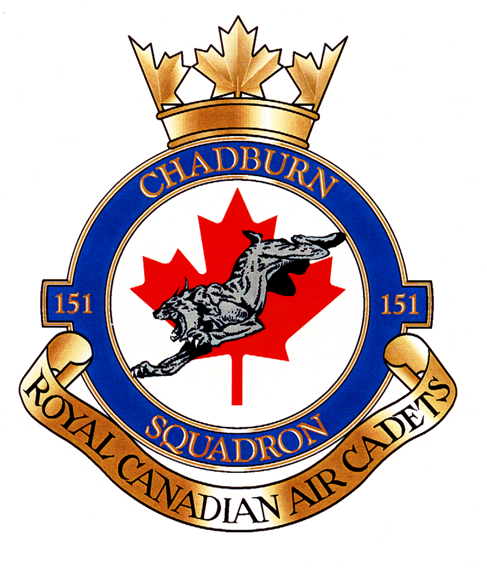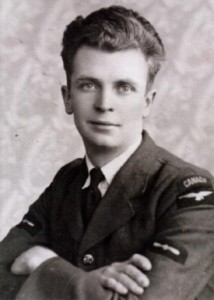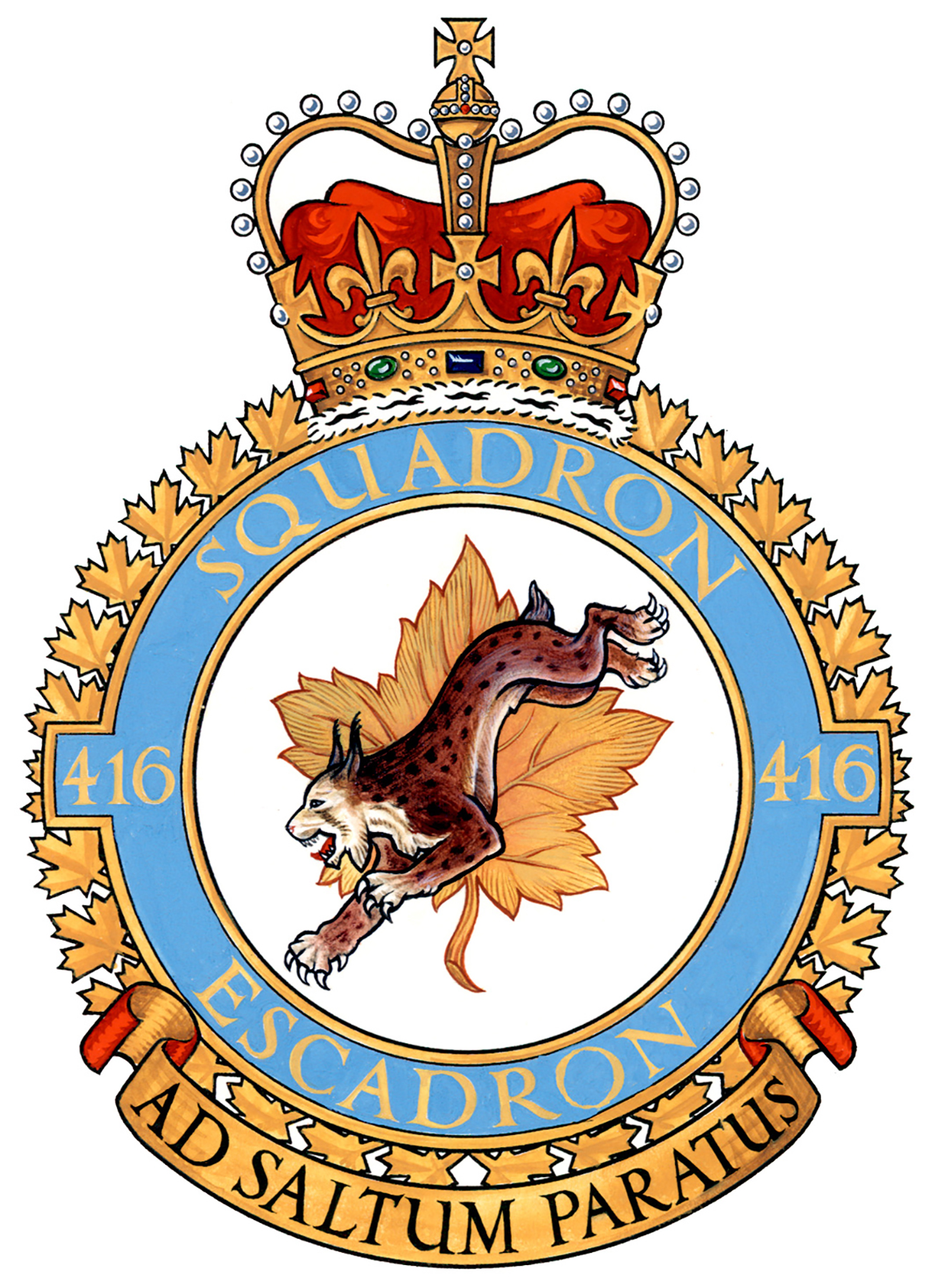Our Squadron’s Crest and its History
The 151 Squadron Crest has important military history behind its design and layout. The general layout with Coronet and the words Royal Canadian Air Cadets are as established by the Air Cadet League of Canada. The selection of the Leaf and Lynx at the centre of the crest was copied from the nose art on Lloyd Chadburn’s aircraft. This aircraft was either a Mark 5C or a Mark IX Spitfire from 416 City of Oshawa Squadron Royal Canadian Air Force and it was flown by Chadburn during the Second World War.
416 Squadron was officially adopted by the City of Oshawa as a way for local communities to support the war effort and at one time Lloyd Chadburn served as its commanding officer. This squadron has been until just a few years ago an active squadron in the Canadian Forces flying the F18 Hornet out of Cold Lake Alberta. As the Squadron is now inactive its colours have been returned to the city and they are on display in the lobby of the City Hall in Oshawa.
Wing Commander Lloyd Chadburn posing
with the nose art on a 416 Squadron
Spitfire circa 1942 – 1943
This crest was originally designed by Maj. Garry Burns, a former Commanding Officer of our Squadron, and what follows are his comments on how the crest was originally developed.
“When I designed the Squadron Crest, it was composed of the standard golden coloured ‘standard cadet wrapper’ that is a Canadian Coronet atop a blue round ring with left and right protruding boxes for the squadron number and a place on the ring for the Squadron’s name, all of this on top of a scroll containing the words Royal Canadian Air Cadets. Inset within the blue ring on a round white disc is a red maple leaf surmounted by the side-view of a Lynx leaping down and to the left. The Lynx was a replica of the one found on Chadburn’s aircraft when he was the commanding officer of 416 ‘City of Oshawa’ Squadron. This is the design that was approved by the Air Cadet League.
To conclude, the colouring of the central elements was always intended to replicate the colours of the standard Air Force Roundel that is a blue outer ring surrounding a white field with a red maple leaf for Canada, a red circle for the United Kingdom and a red Kangaroo for Australia.”
The Artist – LAC Mathew Ferguson
The original artwork for the Squadron crest was designed by LAC Matthew Ferguson who practiced his craft from 1941 until 1945. He designed the artwork at Peterhead Scotland when he was with 416 (Lynx) Squadron. The maple leaf background for his artwork became a Ferguson trademark.
He painted on at least four different types of aircraft, developed station and squadron badges, pioneered placing artwork on bomber jackets worn by aircrew, and, he even painted artwork on bombs. An Albertan, he was clearly the most significant Canadian nose artist of the Second World War and likely in the history of the art form.
The 416 Squadron Crest of the Canadian Forces as it appears today




